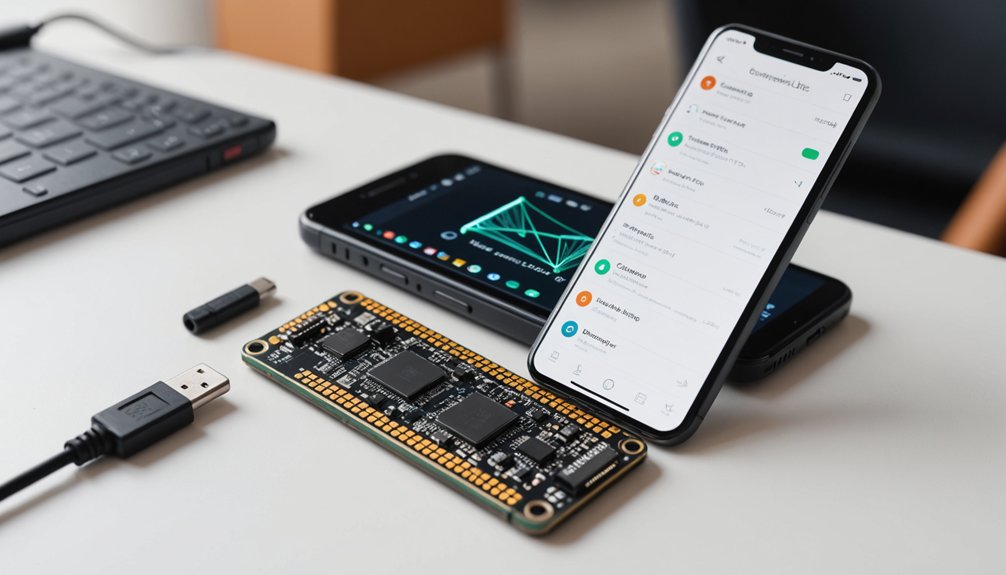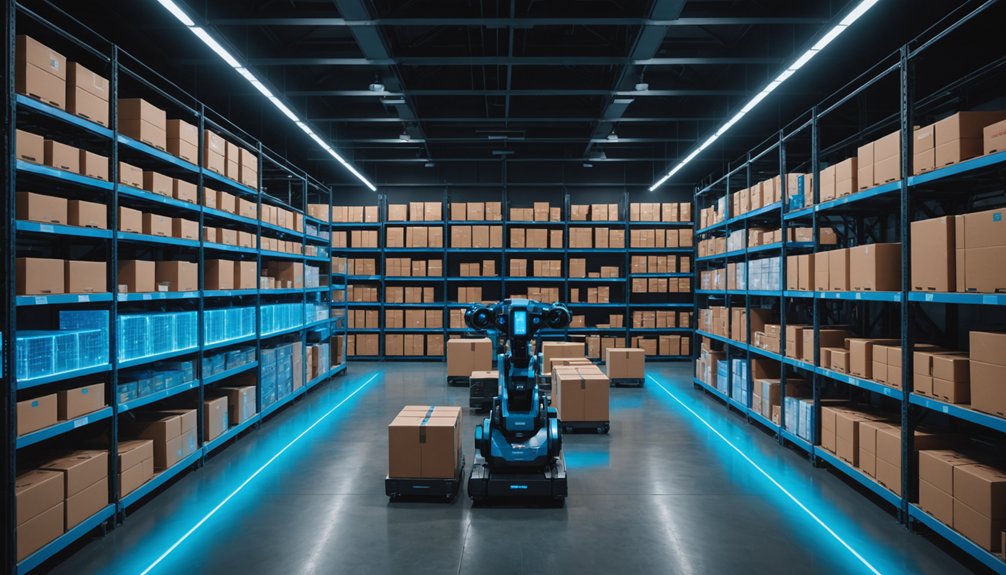TensorFlow Lite implementation follows a straightforward workflow. Developers start with prerequisites setup, choose between pre-trained or custom models, then convert them to the TF Lite format. The lightweight interpreter handles deployment on resource-constrained devices like phones and IoT systems. Debugging is inevitable but manageable. No rocket science here—just systematic steps that prevent device overheating and excessive battery drain. The complete guide offers solutions to common pitfalls many beginners face during their first edge AI project.

When it comes to deploying machine learning models on resource-constrained devices, TensorFlow Lite stands out as the go-to framework. This lightweight solution enables developers to run sophisticated AI on mobile phones, embedded systems, and IoT devices without breaking a sweat. Or the device. Because let’s face it, nobody wants their phone catching fire while detecting a hotdog.
Setting up TensorFlow Lite requires some basic prerequisites. Android developers need Android Studio 4.2+ and SDK version 21 or higher. iOS folks have their own requirements. Embedded system enthusiasts can rejoice too—STM32 boards running Mbed OS work just fine. The framework comes packed with necessary libraries like flatbuffers and gemmlowp. Essential stuff. Not optional. TensorFlow Lite represents the efficient flow of tensors through operations optimized for mobile and embedded devices. Leveraging pre-trained models through transfer learning can significantly reduce development time and resource requirements.
Before diving into TensorFlow Lite, gear up with the right tools—they’re non-negotiable for making edge AI work on your device.
Getting models onto devices isn’t rocket science. Developers can either use pre-trained models (the lazy option) or train custom ones with TensorFlow proper. Either way, conversion is mandatory. The TensorFlow Lite converter transforms regular models into a format that won’t make your mobile device cry. Optimization matters here. A lot. Implementing automated workflows helps streamline the model deployment process and ensures consistent quality.
Deployment happens through the TensorFlow Lite interpreter, which loads and runs the converted models. It’s surprisingly versatile—supporting both inference and on-device training for personalization. Real-time applications? Check. App integration? Double check. The framework handles resource constraints remarkably well, all things considered.
For the embedded systems crowd, TensorFlow Lite Micro is the answer. STM32 boards love it. Include the libraries, adjust platform settings, and you’re good to go. Low power consumption is a key feature here—critical for devices that can’t be plugged in constantly. For Linux implementations, simply install the TensorFlow Lite interpreter using the tflite-runtime package via Python.
Debugging will happen. Count on it. Common issues involve compilation errors, platform configuration problems, and model compatibility hiccups. Nothing insurmountable, though. Just part of the developer experience.
TensorFlow Lite makes edge AI accessible to developers who don’t have Google-sized computing resources. It’s efficient, practical, and surprisingly powerful for something designed to run on devices with limited capabilities.
Frequently Asked Questions
How Does Tensorflow Lite Compare to Full Tensorflow?
TensorFlow Lite is TensorFlow’s lightweight cousin. Designed specifically for mobile and edge devices. It sacrifices complexity for speed and efficiency—perfect for when your fancy AI needs to run on a smartphone.
Full TensorFlow? That’s the heavyweight. More capabilities, better for training and complex models. But it’s resource-hungry.
The tradeoff is clear: TensorFlow Lite offers on-device inference, privacy, and offline capability.
Full TensorFlow gives you power but demands more resources. Choose wisely.
Can Tensorflow Lite Run on Ios Devices?
Yes, TensorFlow Lite runs on iOS devices. It’s designed specifically for mobile platforms, including iOS 9 and newer.
Not a perfect solution though. Integration happens through ML Kit, requiring Firebase libraries. Models must be converted to TensorFlow Lite format using TOCO first.
On-device training? Not fully available yet for iOS—that’s still in the pipeline.
Developers can also consider LiteRT as an alternative that works with Core ML and Metal for better performance.
What Are the Memory Limitations for Tensorflow Lite Models?
TensorFlow Lite models face serious memory constraints. Device RAM limitations can cause crashes on smaller devices. Minimum 2GB RAM recommended, but 4GB is better.
Size matters, people. Models need to fit in limited storage and working memory. Quantization helps shrink models but might hurt accuracy.
Power requirements on mobile devices add another headache. It’s a constant balancing act between model size, performance, and accuracy. Not easy stuff.
How Do I Debug Tensorflow Lite Model Performance Issues?
Debugging TensorFlow Lite performance issues requires a toolkit approach. Developers use TensorFlow Profiler to identify bottlenecks and the Model Optimization Toolkit for efficiency improvements.
TensorFlow Lite Debugger App tests directly on iOS devices. For Android, Logcat in Android Studio tracks issues.
Post-training quantization reduces model size. Numerical problems? Enable check_numerics(). Memory leaks show up over time.
Hardware compatibility matters—test across CPUs and GPUs. No magic bullet here. Just methodical debugging.
Can Existing Tensorflow Models Be Used Without Conversion?
No. Existing TensorFlow models cannot be used directly in TensorFlow Lite without conversion.
It’s simply not possible. TensorFlow Lite supports only a limited subset of operations from the full TensorFlow framework. The conversion process is necessary – it reduces file size, optimizes performance, and guarantees compatibility with mobile and embedded devices.
Skip this step and nothing works. Period. Some operations might not even make the cut during conversion due to compatibility issues.




